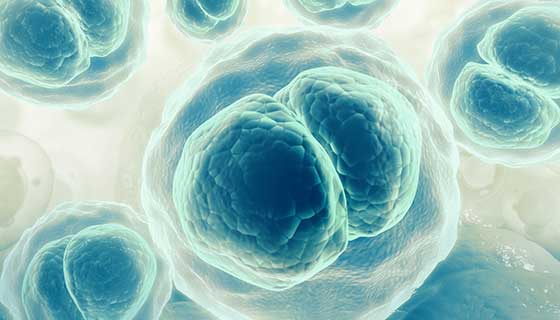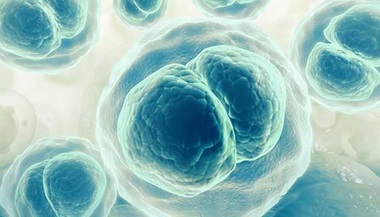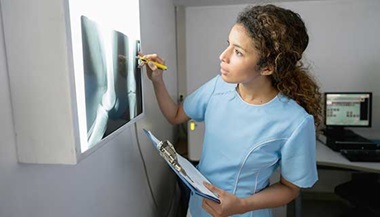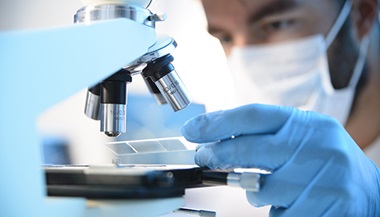Fibrous Dysplasia
What is fibrous dysplasia?
Fibrous dysplasia is a chronic problem in which scar-like tissue grows in place of normal bone. It often results in one or more, of the following:
-
Bone deformity
-
Brittle bones
-
Pain
-
Uneven growth of bones
Any bone can be affected. More than one bone can be affected at any one time. When multiple bones are affected, it is not unusual for them to all be on one side of the body. However, fibrous dysplasia does not spread from one bone to another. The most commonly affected bones include the following:
-
Facial bones
-
Pelvis
-
Ribs
-
Shinbone (tibia)
-
Skull
-
Thighbone (femur)
-
Upper arm bone (humerus)
-
Vertebrae in the spine
Some people develop hormonal problems and a condition called McCune-Albright syndrome. McCune-Albright syndrome is another form of fibrous dysplasia. It causes different symptoms, such as early onset of puberty and skin spots, called café-au-lait spots.
Fibrous dysplasia usually occurs in children ages 3 to 15. It is sometimes not diagnosed until adulthood. It is found equally in men and women.
What causes fibrous dysplasia?
The exact cause of fibrous dysplasia is not known. It is believed to be due to a chemical defect in a specific bone protein. This defect may be due to a gene mutation present at birth, although the condition is not known to be passed down in families.
What are the symptoms of fibrous dysplasia?
The following are the most common symptoms for fibrous dysplasia. However, each person may experience symptoms differently. Symptoms may include:
-
A waddling walk
-
Bone deformity
-
Bone fractures
-
Bone pain (which happens when the fibrous tissue expands in the bone)
-
Scoliosis (a sideways curve of the spine)
The symptoms of fibrous dysplasia may look like other medical problems. Always talk with your healthcare provider for a diagnosis.
How is fibrous dysplasia diagnosed?
In addition to a complete medical history and physical exam, other tests may include:
-
Biopsy. A test in which tissue samples are removed from the body and looked at under a microscope. It can help determine if cancer or other abnormal cells are present. It can also be done to remove tissue from the affected bone.
-
Bone scan. Your doctor may order a bone scan to look for additional lesions throughout your entire skeleton. During this test, a very small amount of radioactive dye is injected into the body by IV.
-
Lab tests. When fibrous dysplasia lesions are actively growing, blood and urine tests may show elevated levels of the certain enzymes and amino acids in the body.
-
Other imaging tests. Your healthcare provider may order an MRI or CT scan to further evaluate the affected bones.
-
X-ray. A diagnostic test that makes images of internal tissues, bones, and organs onto film.
How is fibrous dysplasia treated?
Specific treatment for fibrous dysplasia will be determined by your healthcare provider based on:
-
Your age, overall health, and medical history
-
Extent of the disease
-
Your tolerance for specific medicines, procedures, or therapies
-
Expectations for the course of the disease
-
Your opinion or preference
Surgical treatment may include the following procedures:
-
Placement of a rod down the shaft of the bone
-
Removal of affected bone, followed by bone grafting
-
Removal of bone wedge
Other treatment may include:
-
Medicines
-
Pain management
-
Physical therapy
Key points about fibrous dysplasia
Fibrous dysplasia is a chronic disorder in which scar-like tissue grows in place of normal bone. Any bone can be affected.
-
Fibrous dysplasia usually occurs in children ages 3 to 15, but it sometimes is not diagnosed until adulthood.
-
The exact cause of fibrous dysplasia is not known, but it is not passed down through families.
-
Symptoms may include bone pain and deformity, a waddling walk, and scoliosis.
-
Treatment may include surgery, medicines, pain management, or physical therapy.





